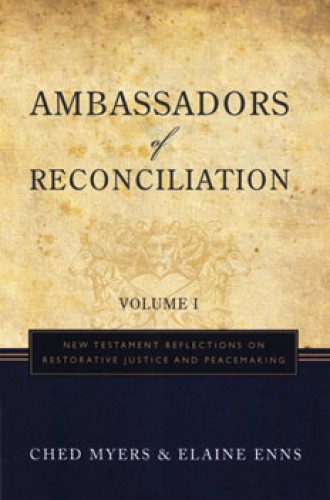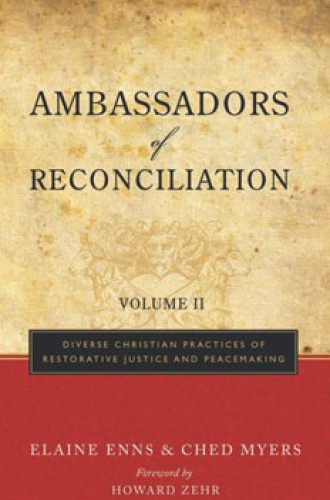Ways of peace
There isn't a tidy way to write about forgiveness. It's the whole gospel, for sure. But you've got to deal with the sin that preceded it and the damage that won't go away no matter how much reconciliation follows it. You've got to deal with the stop-start nature of relationships, the silence and paralysis of pain and shame, and the fact that we fail at least as much as we succeed. And then you've got to face the reality that much of the church, let alone the wider culture, isn't particularly taken with the whole notion of restoring sinners and offenders—it is more given to shunning or obliterating them.
Ched Myers and Elaine Enns never pretend otherwise. They met when they were speaking at a peacemaking conference in 1997. One imagines these books taking shape in their imagination as they exchanged ideas and passions. The tension that animates the books is the same that undoubtedly lit up their first exchanges: Ched was an activist for nonviolence and biblical scholar who had scarcely interacted with people working on issues of restorative justice and conflict transformation; Elaine was more or less the opposite. The irony is that even among peacemakers, the suspicions between church/secular, academy/practice and ideology/policy are at least as fierce as anywhere else. These two volumes are an attempt to bring these worlds together into a conceptual whole.
Hence their carefully chosen terminology for the field: restorative justice and peacemaking. Their judicious definition locates the process of identifying harms, needs and responsibilities between the immediate need to reduce violence and the longer-term need for reparation and reconciliation. Perhaps the snappiest description for this sprawling field is one borrowed from a practitioner, who speaks of four categories: peacebuilding (negotiation), peacemaking (mediation and dialogue), peacekeeping (arbitration) and peacewaging (nonviolent struggle).







